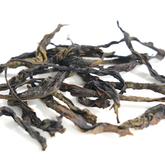How many kinds of teas are there?
China is the birthplace of tea, home to the world's oldest tea trees located in Yunnan Province. Additionally, China boasts the largest tea cultivation area globally. The classification of tea varieties in China is diverse and can be based on factors such as manufacturing methods, quality differences, processing techniques, origin, and growing environment. However, the most common classification method divides tea into six main categories based on processing methods. Each of these six tea categories has unique flavors and characteristics. It's important to note that within each category, there are various distinct varieties, often named after their local origin, such as Xihu Longjing, which refers to green tea produced in West Lake.
Green Tea Green tea is categorized as an unfermented tea. It is made from fresh tea leaves through processes like pan-firing, rolling, and drying. The dry tea leaves and brewed tea are primarily green in color. Green tea retains a high percentage of natural compounds, with over 85% of its polyphenols and caffeine preserved. Scientific studies have shown that the natural substances in green tea have special effects, including anti-aging, cancer prevention, antibacterial, and anti-inflammatory properties, which are not found in other tea types. Notable green tea varieties: Xihu Longjing, Dongting Biluochun, Xinyang Maojian, Emei Zhuyeqing, Duyun Maojian, Enshi Yulu, Anji Baicha, Taiping Houkui.

Yellow Tea Yellow tea is a lightly fermented tea (fermentation level of 10-20%) characterized by its "yellow leaves and yellow soup." This yellow color is a result of the "sealing yellow" process during tea production. Depending on the tea variety, there can be significant differences in leaf selection and processing techniques. For example, Junshan Yinzhen from Dongting Lake in Hunan Province uses only the finest buds and undergoes a meticulous production process. The processed Junshan Yinzhen is covered in fine hairs and has a golden, lustrous color. Notable yellow tea varieties: Junshan Yinzhen, Mengding Huangya.

White Tea As the name suggests, white tea is characterized by its pale color and is relatively rare. White tea is a specialty of China, primarily produced in Fujian Province, with some production in Taiwan and Yunnan. With a history of about 200 years, white tea was first created in Fuding County, using a fine variety of tea tree known as Fuding Dazhong. The white color results from minimal processing—sun-drying or low-heat drying, which preserves the white hairs on the tea buds. Notable white tea varieties include Silver Needle, White Peony, Gongmei, and Shoumei. Silver Needle, covered in fine white hairs, is particularly admired for its elegant appearance and refreshing taste. Notable white tea varieties: Baihao Yinzhen, White Peony, Gongmei, Shoumei, Moonlight White.

Oolong Tea Also known as Qing tea or semi-fermented tea (fermentation level of 30-60%), Oolong tea is renowned for its distinct aroma and flavor. The name derives from its creator. Oolong tea combines the processing methods of green and black teas, with qualities that lie between the two. It features the robust flavor of black tea along with the refreshing aroma of green tea, often described as having "green leaves with red edges." Oolong tea is recognized for its health benefits, particularly in fat breakdown and weight management. In Japan, it is referred to as "beauty tea." Oolong tea is unique to China, mainly produced in Fujian, Guangdong, and Taiwan, with some production in Sichuan and Hunan. Notable oolong tea varieties: Wuyi Rock Tea, Wuyi Rougui, Minbei Shui Xian, Tieguanyin, Fenghuang Dancong, Taiwan Oolong, Da Hong Pao.

Black Tea Named for its red-colored brew and leaves, black tea is fully fermented (fermentation level of 80-90%). During processing, black tea does not undergo pan-firing; instead, it withers to reduce moisture, followed by rolling and fermentation, transforming polyphenols into red compounds. These compounds dissolve in water, creating the characteristic red soup and leaves. Black tea can be categorized into three main types: small-leaf black tea, gongfu black tea, and broken black tea. Notable black tea varieties: Qimen, Dianhong, Jin Junmei, Zhengshan Xiaozhong, Yinghong No. 9, Jiuqu Hongmei.

Dark Tea Dark tea is a post-fermented tea (100% fermentation). The dry tea typically appears dark brown, with a deep red brew. Due to the use of coarse leaves, dark tea undergoes a lengthy fermentation process, resulting in its characteristic dark color. Historically, dark tea was mainly consumed by ethnic minorities in China's border areas, including Tibetans, Mongolians, and Uyghurs, as an essential part of their daily lives. Notable dark tea varieties: Hunan Dark Tea, Liubao Tea, Pu'er Ripe Tea.

In summary, tea is generally classified into six main categories based on the degree of fermentation during processing: green tea, white tea, yellow tea, oolong tea, black tea, and dark tea. It is important to recognize that China has a vast tea cultivation area and numerous tea tree varieties. For instance, Oolong tea includes many varieties, often named after their local origin, such as Anxi Tieguanyin and Taiwan Dongding Oolong.
SEE MORE
If you have questions about selecting tea:
Learn-more-about-chinese-tea
If you have questions about the benefits of tea:
Health-benefits-of-chinese-tea
If you have questions about brewing tea:
How-to-brew-loose-leaf-tea








